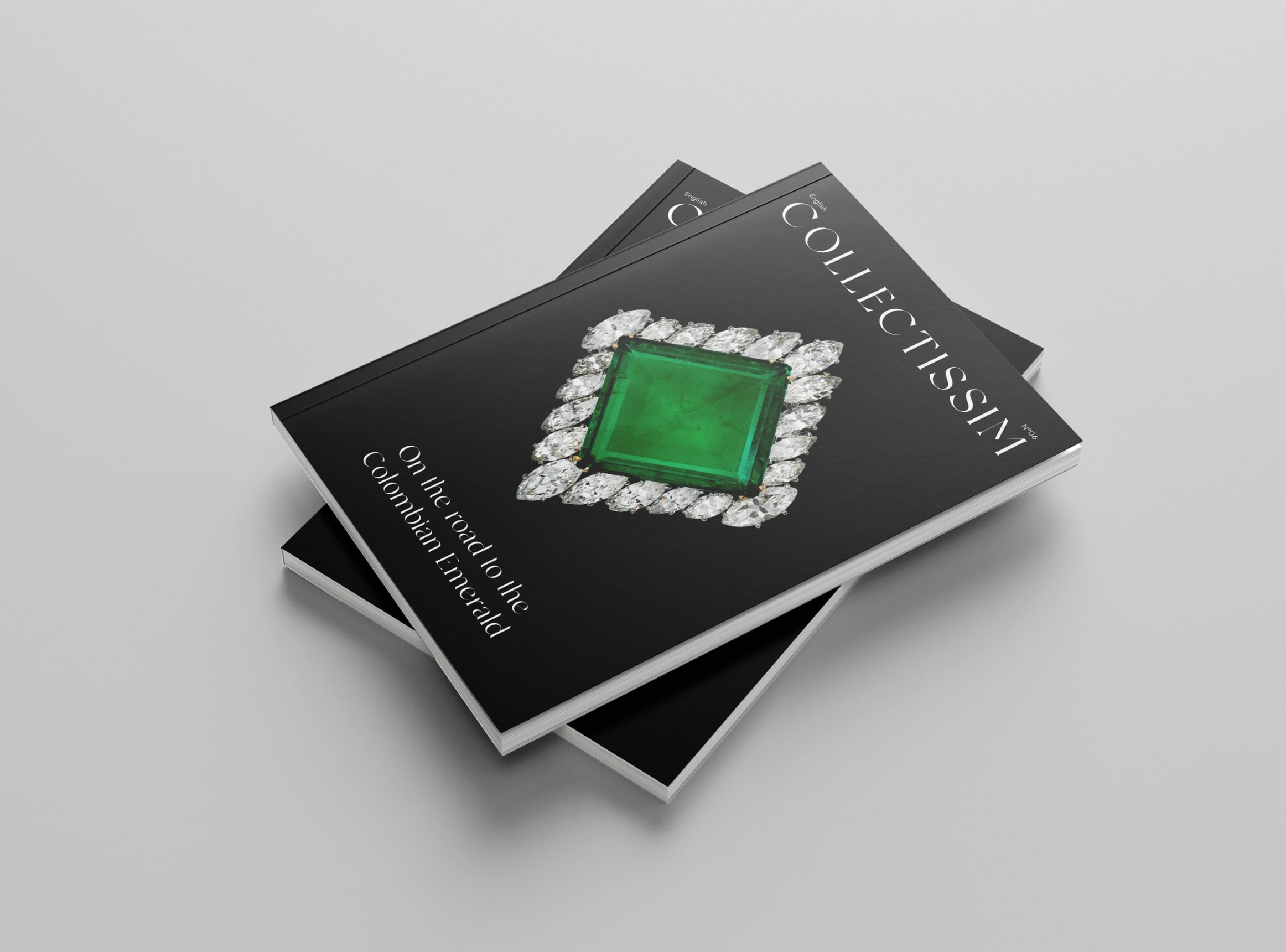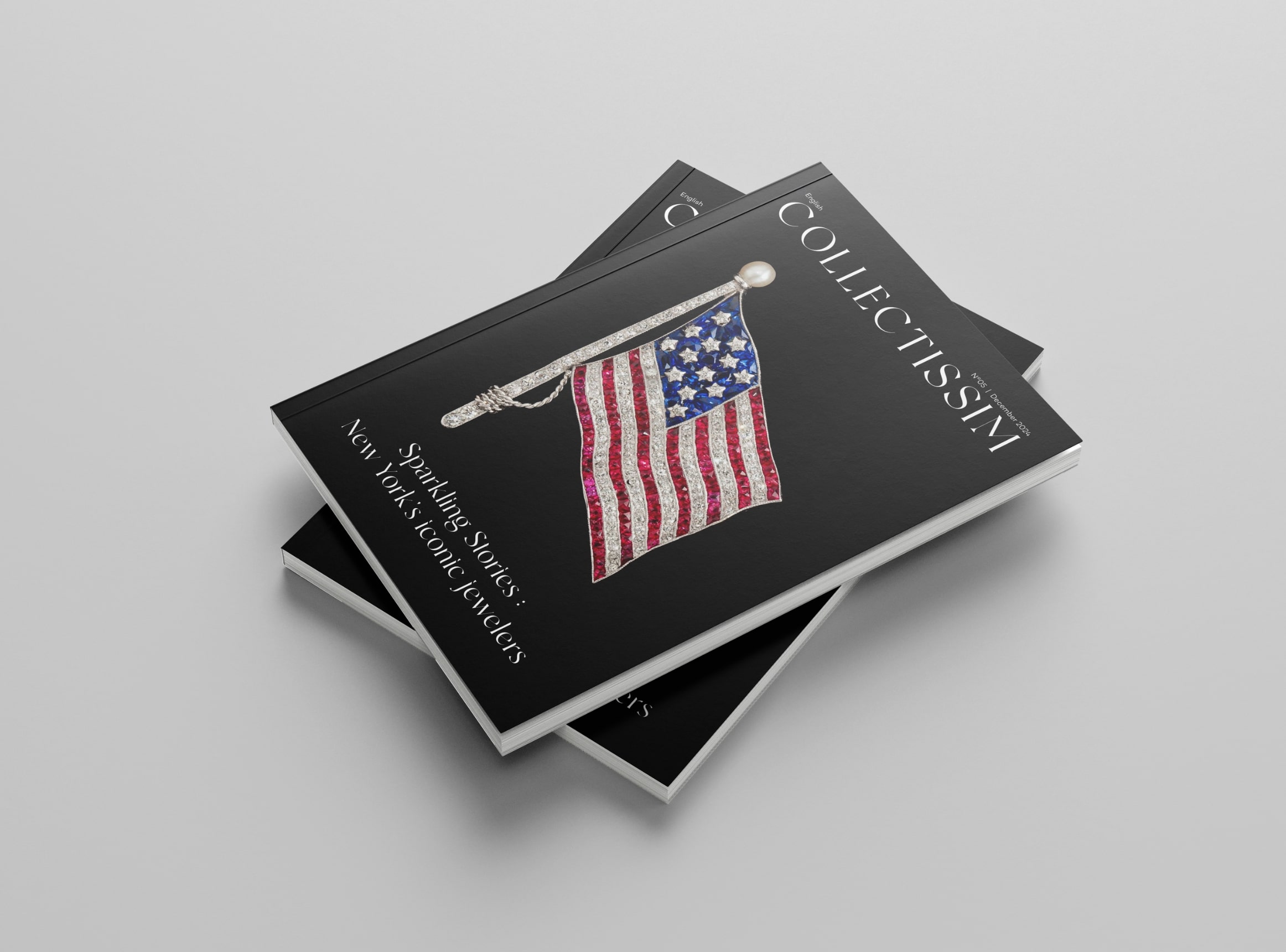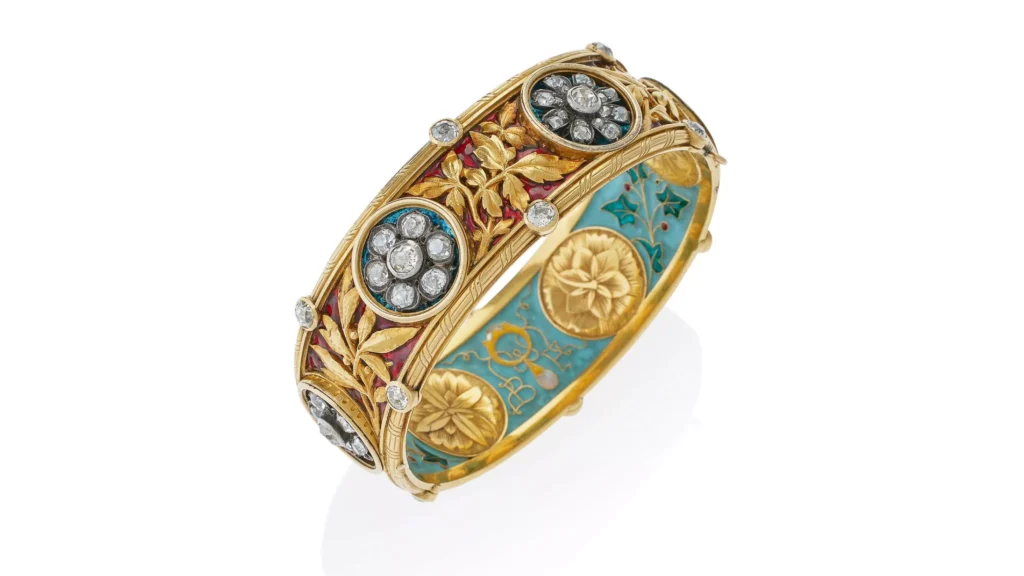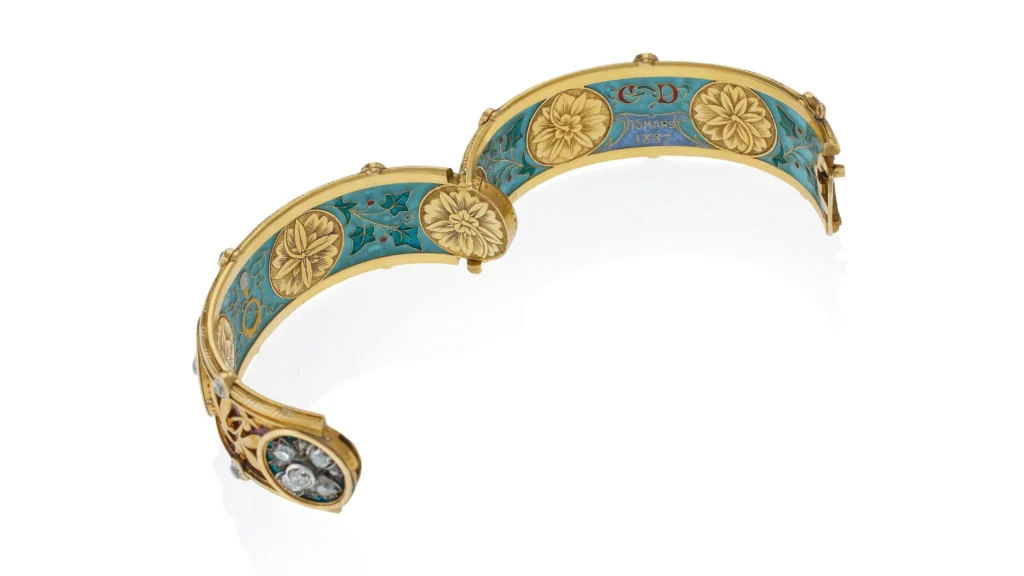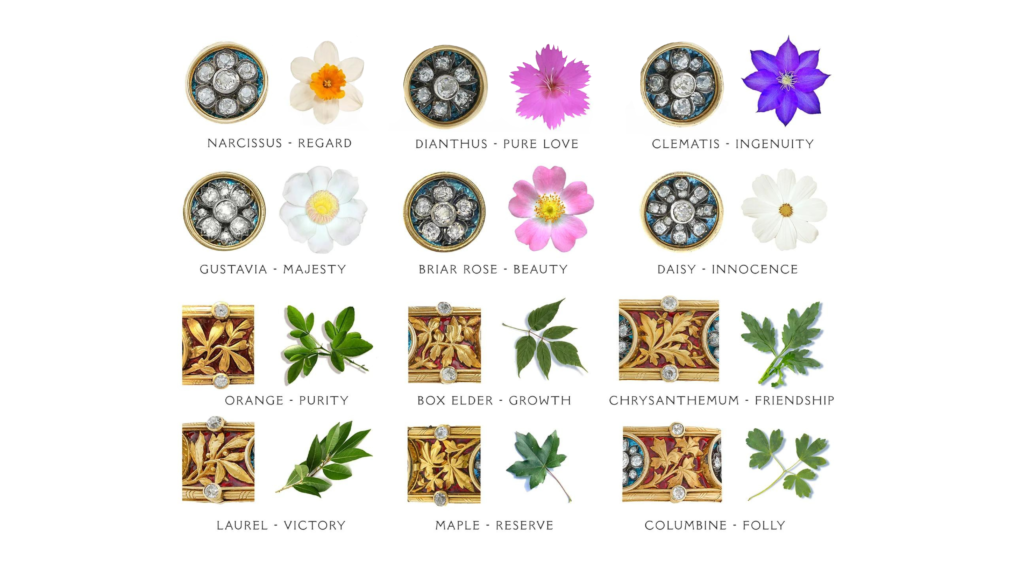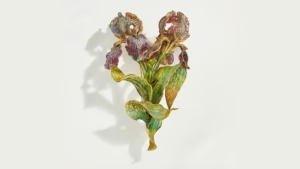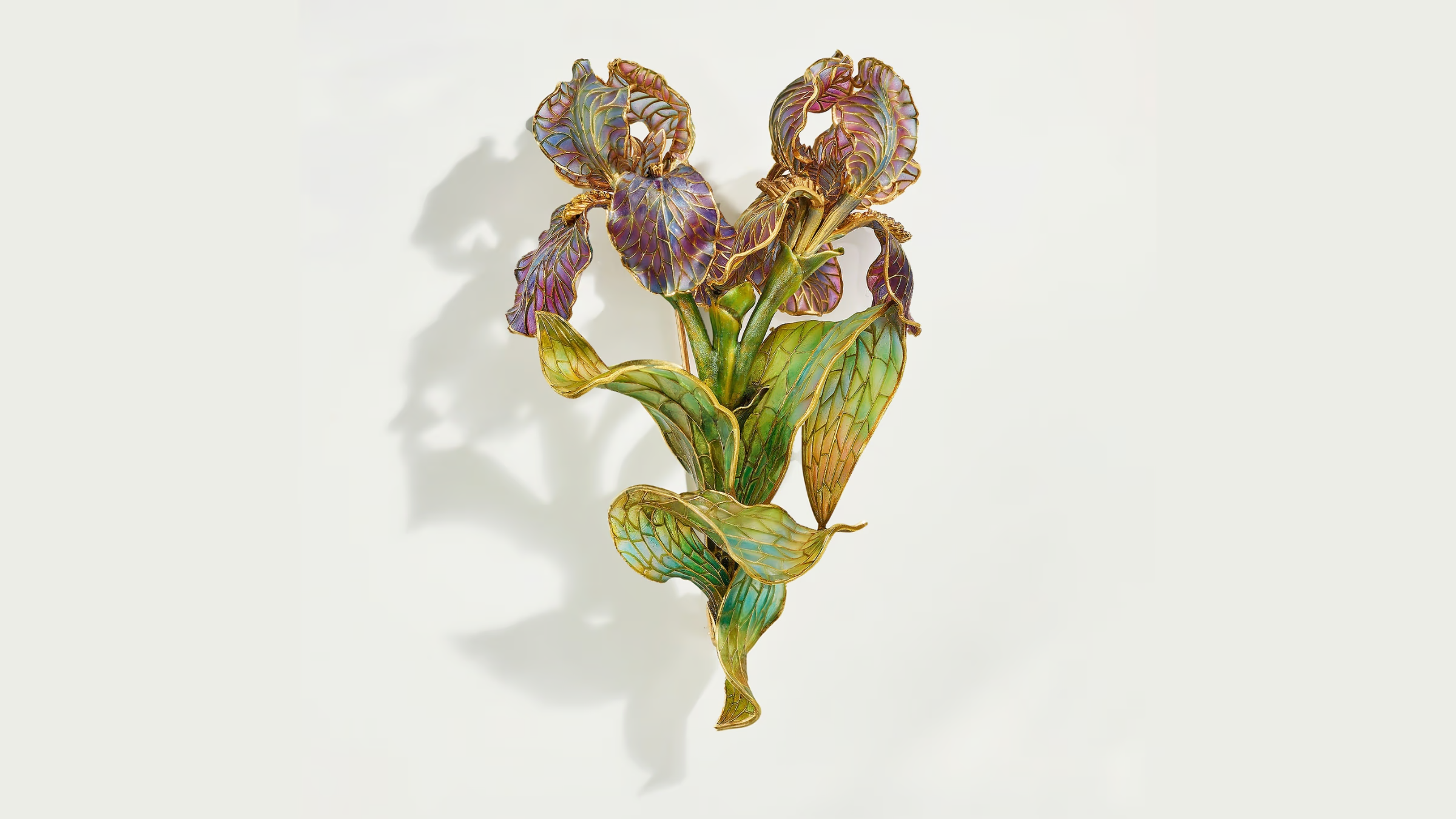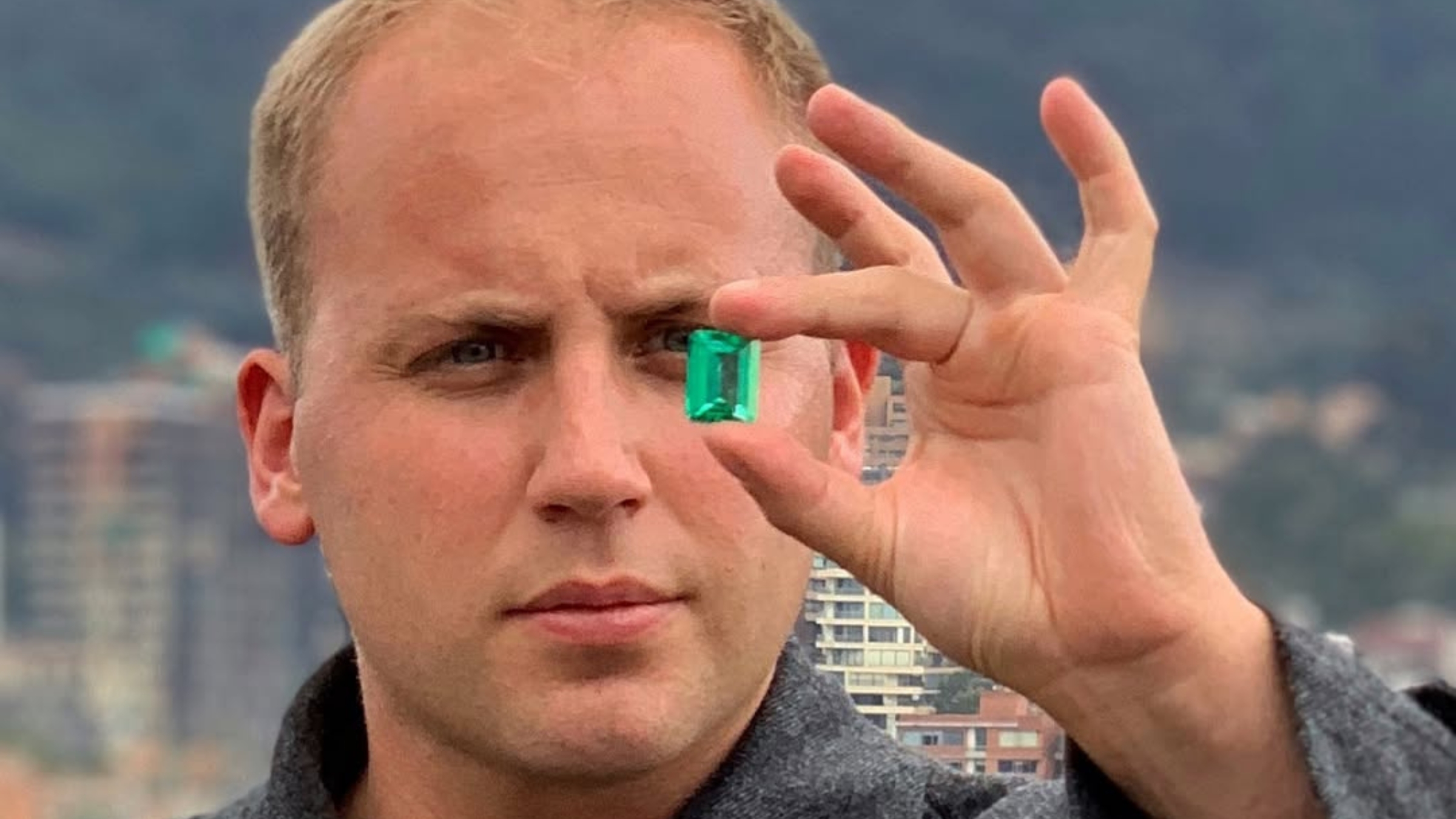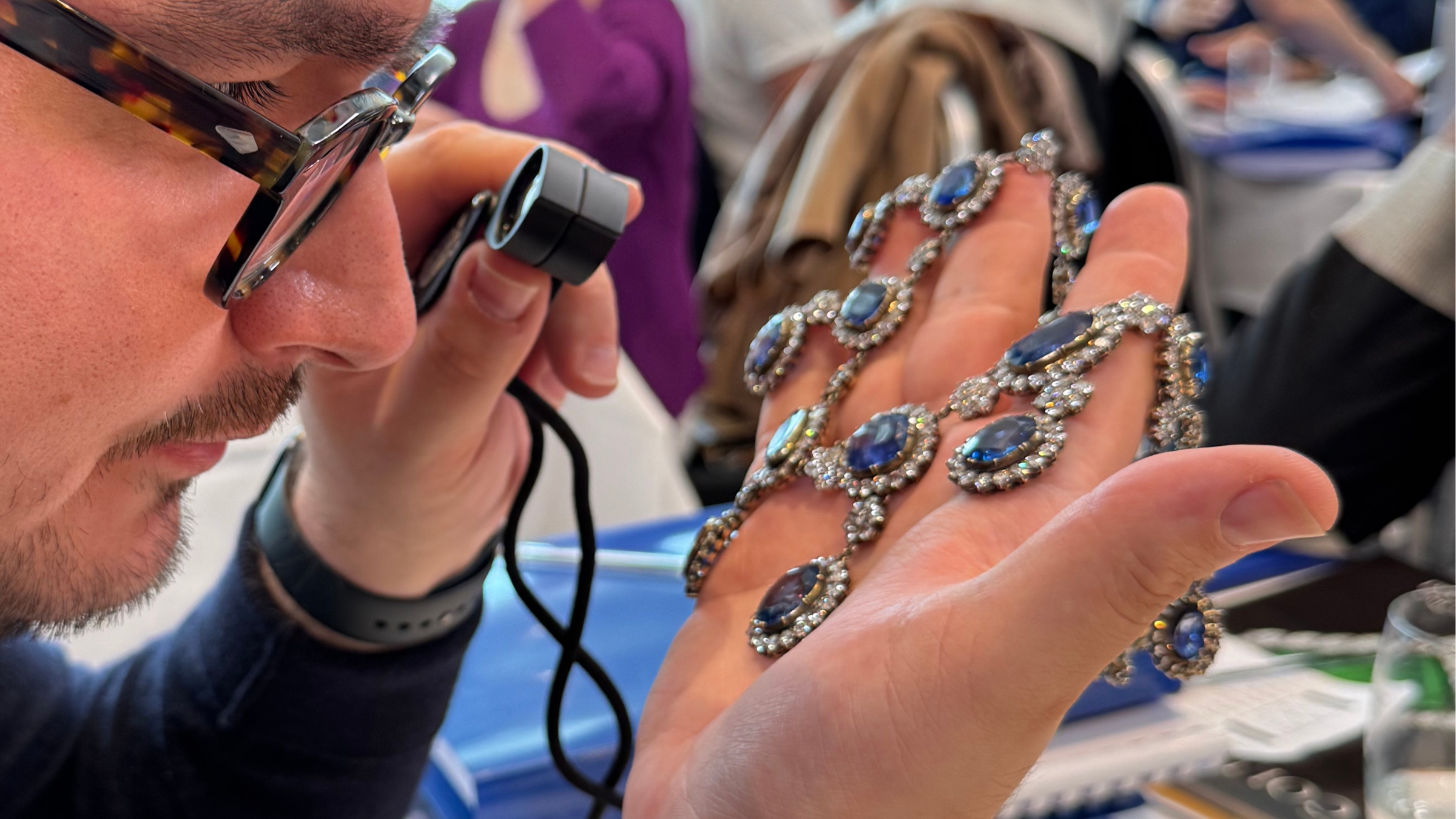The result of the creative genius and expertise of Lucien Falize and Germain Bapst, this bracelet in gold, enamel and diamonds, made around 1887 and offered by the Macklowe Gallery in New York, is the perfect testimony to this extraordinary partnership, which for just a few years produced jewelry of exceptional finesse and refinement.
A true masterpiece, the bracelet is crafted in yellow gold and embellished with exceptionally fine enamel. Each motif is delicately chiseled, and the sophistication of the ornamentation reflects the absolute mastery of enamel and engraving techniques. On the outside, the bracelet is decorated with medallions representing six distinct species of flowers (narcissus, carnation, clematis, wild rose, gustavia, daisy) composed of diamonds alternated with six species of foliage (orange, maple, chrysanthemum, laurel, columbine, maple negundo) chased and enhanced with translucent red enamel on paillons.
The reverse of the bracelet is enameled in light blue, and each medallion contains a chased gold representation of the same flower as on the outside. The initials C and D with the date March 15, 1887 suggest that the bracelet was made for a wedding, and the initials B and F for Bapst & Falize. The ornamentation of the bracelet and the choice of flowers were not left to chance. Indeed, each flower, by its symbolism, refers directly to a virtue. For this reason, the Macklowe Gallery researched each species represented.
Bapst & Falize, an exceptional duo
Germain Bapst was the son of Paul-Alfred Bapst, the eldest of six children and descendant of a family of jewelers. Indeed, Paul-Alfred Bapst was the last Crown jeweler of the French Second Empire. Germain Bapst was educated by the Jesuits, before joining the family business run by his father and cousins Paul and Jules Bapst. I made a video with Geoffray Riondet in which we talked about the history of the Bapst family.
Lucien Falize was the son of the famous Alexis Falize, a brilliant jeweler trained at Mellerio who founded his own company in 1838. Lucien began his apprenticeship in the family business in the 1850s, and for many years worked closely with his father, becoming his partner in 1871. Lucien was passionate about the Renaissance and Japanese art. In recognition of his work for the 1878 Exhibition, Lucien was awarded a Grand Prix and a Croix de la Légion d’Honneur.
Historian and jeweler Henri Vever described Lucien as a “scholar, thinker and artist”, as well as a man of “impeccable taste and […] exceptional talent”.
In 1879, Lucien went into partnership with Germain Bapst. According to Vever, they didn’t agree on everything, but understood each other perfectly. Their relatively modest but astonishing output can be found in many museum collections. But realizing that he had more aptitude for historical and artistic studies than for business, Germain Bapst left his partner Lucien Falize and relinquished management of the company to him. All his life, Lucien strived for innovation and perfection. To create these incredible jewels, Falize collaborated with several renowned engravers and enamellers.
In addition to his admiration for the work of Renaissance and Japanese artists, Lucien loved plants for the infinite inspiration they provided, and studied botany. Flowers such as carnations, forget-me-nots, violets, daisies, buttercups, lilies of the valley, dandelions and irises appear in his jewelry and decorative objects, as do more exotic palm, mimosa and sweet almond leaves, and even humble celery and cabbage. Inspired by the special attention Japanese artists pay to seemingly insignificant flora and fauna, Falize writes that “even dead wood, in winter, can serve as a model”.
A modest but high-quality production
These luxury items, like entirely handmade works, were exorbitantly expensive to produce. The case of Bapst & Falize, with their extremely fine jewelry, was no exception. Despite hard work and numerous orders, Bapst & Falize’s finances were often precarious due to the small number of craftsmen capable of producing work of this quality, which meant very high manufacturing costs.
A bracelet like the one featured in this article perfectly illustrates this attention to detail and the care taken in its creation. If you look at the enamel work, you immediately realize the complexity and skill required to achieve a satisfactory result. Translucent enamels such as these have been created using the highly complex technique of “paillonné” enamel, in which tiny gold leaves are placed one at a time between several layers of enamel.
What’s remarkable about this bracelet, in addition to its fine craftsmanship, is the care taken to research the symbolism of the flowers and foliage used. Indeed, in the interests of speed and economy, it would have been possible to standardize the bracelet by reproducing the same thing each time, but here the two jewelers go much further, drawing on their extensive knowledge of botany. Each species is chosen for its symbolism linked to love, with references to beauty, purity, friendship, fertility, innocence and pure love.
A piece of this quality and level of refinement can only be found in antique jewelry. Bapst & Falize jewelry of this quality is extremely rare on the market, as many are in private collections or museums. To find out more about this bracelet, please visit the Macklowe Gallery website.
